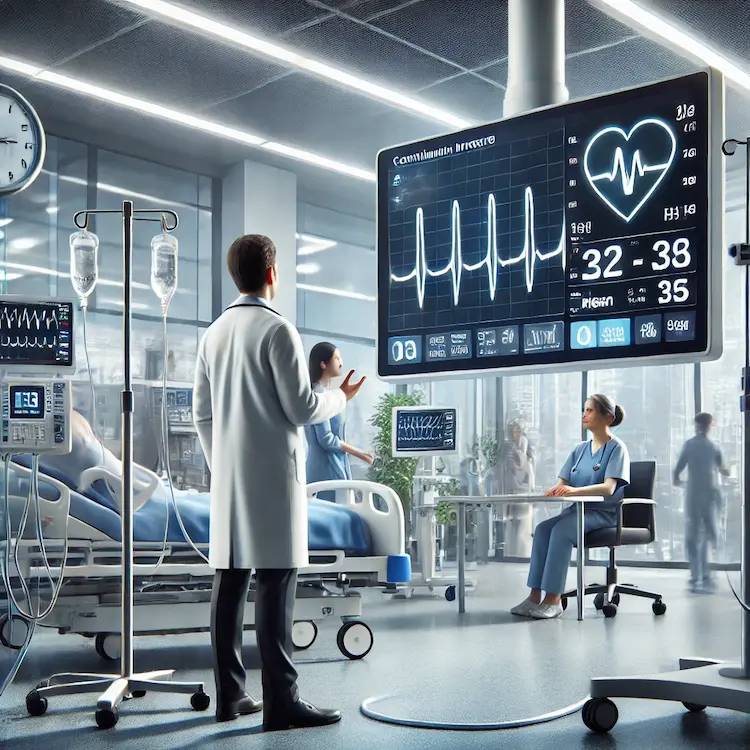Blood pressure (BP) is a key indicator of cardiovascular health, and it plays an essential role in patient care. In hospital settings, maintaining accurate and consistent blood pressure monitoring helps healthcare professionals make informed decisions about treatment plans, medications, and other interventions. This article explores the importance of blood pressure monitoring, compares different methods and tools, and highlights best practices for both patients and healthcare providers.
Blood pressure is one of the most vital signs, along with temperature, pulse, and respiratory rate. Accurate and continuous blood pressure measurements in hospital settings help detect abnormalities such as hypertension (high blood pressure) or hypotension (low blood pressure). Early detection significantly reduces the risk of complications like stroke, heart attack, and organ failure.
The most common method is non-invasive blood pressure measurement using a sphygmomanometer (manual or automated). A blood pressure cuff is placed around the upper arm, inflated to stop blood flow, and then slowly deflated while readings are taken. Key subtypes include:
Invasive blood pressure monitoring involves inserting a catheter into an artery (often the radial or femoral artery) to measure systolic and diastolic pressures continuously. While more accurate and reliable over time, IBP is typically reserved for critically ill patients in intensive care units (ICUs) because of its risks (e.g., infection, arterial damage).

Though more common in outpatient settings, ambulatory blood pressure monitoring can also be utilized in extended-care facilities or for specialized studies within hospitals. A wearable cuff and device record BP at regular intervals (e.g., every 15–30 minutes) over 24 hours. ABPM can uncover phenomena like white coat hypertension—elevated blood pressure readings in clinical settings due to anxiety—which might lead to overtreatment if not discovered.
Emerging continuous non-invasive blood pressure monitoring devices use advanced sensors or waveform analysis to provide real-time data without needing a catheter. These devices, often used in specialized hospital units, can detect sudden changes and alert caregivers immediately.
Below is a simplified table comparing non-invasive, invasive, and ambulatory methods:
| Method | Accuracy | Frequency of Monitoring | Clinical Use | Pros | Cons |
|---|---|---|---|---|---|
| Non-Invasive (Manual) | High when done correctly | Spot checks | General wards, outpatient | Low cost, easy to use, widely available | Dependent on user skill, potential for error |
| Non-Invasive (Automated) | Good, though user-dependent | Spot or periodic checks | General wards, outpatient | Quick, user-friendly, reduces human error | Potential inaccuracies if improperly fitted |
| Invasive (IBP) | Very high | Continuous | ICUs, critical care | Continuous data, highest accuracy | Risk of infection, more expensive |
| Ambulatory (ABPM) | Good, real-world accuracy | 24-hour periodic measurements | Outpatient diagnostics, research | Detects white coat or masked hypertension | May be uncomfortable, requires patient compliance |
Digital health is revolutionizing how blood pressure is measured and monitored. Hospitals increasingly use electronic medical records (EMRs) that integrate BP data directly from automated machines, minimizing transcription errors. Wireless or Bluetooth-enabled blood pressure monitors also feed data into patient profiles for real-time updates.
Telemonitoring allows for seamless transfer of vital signs data from bedside devices to healthcare professionals, even if they are off-site. This system is especially useful in situations requiring isolation (e.g., infectious disease outbreaks) or for patients with mobility issues.
Advances in wearable technology mean that continuous blood pressure monitoring could become standard for high-risk inpatients. Currently, devices like smartwatches and specialized armbands offer partial insights, though hospital-grade accuracy remains under development. As sensors improve, these devices could revolutionize how frequently and consistently we track BP.

In-hospital blood pressure monitoring is vital for hypertension management, patient safety, and optimized care. Healthcare professionals rely on data from invasive, non-invasive, and continuous non-invasive methods to guide interventions. Technological innovations like telemonitoring, digital health platforms, and smart wearables are enhancing accuracy and convenience. By adhering to best practices—such as using the right cuff size, calibrating devices, and paying attention to trends—clinicians can provide better patient outcomes and reduce the burden of cardiovascular risks.